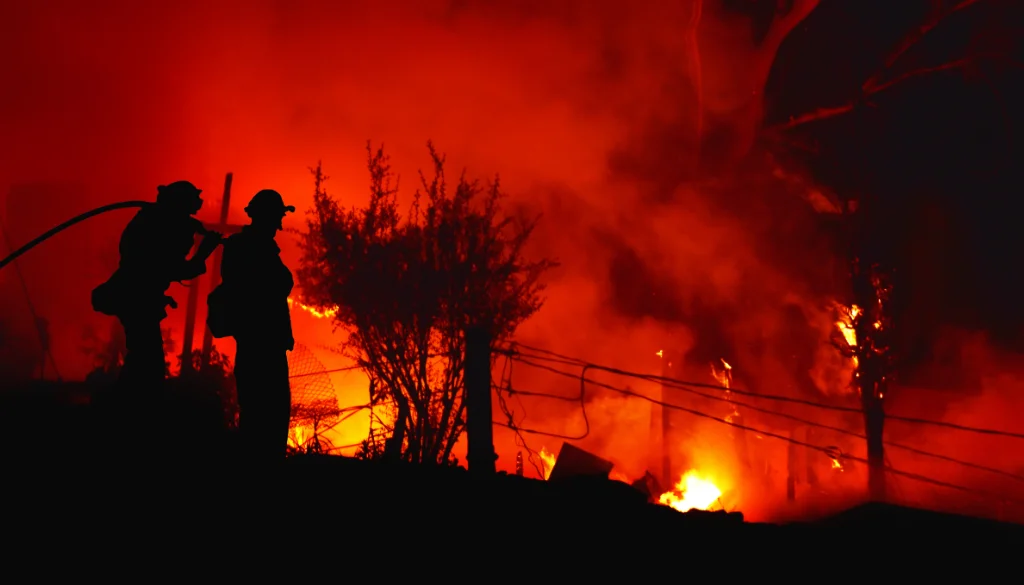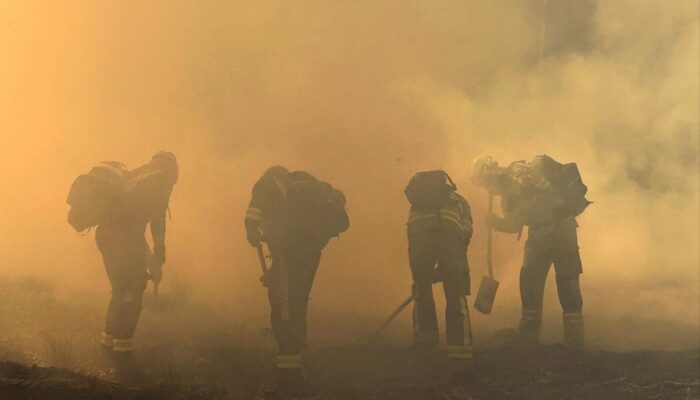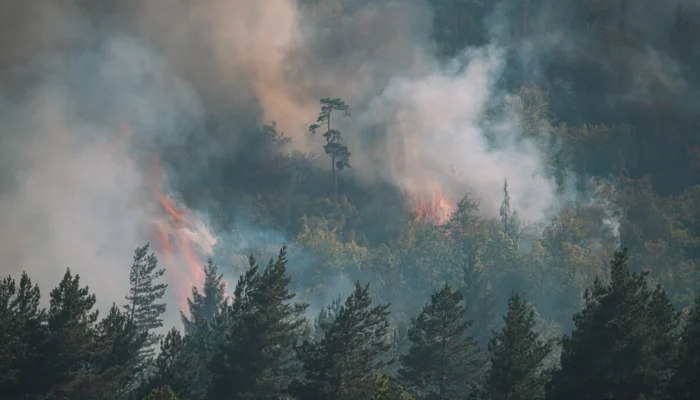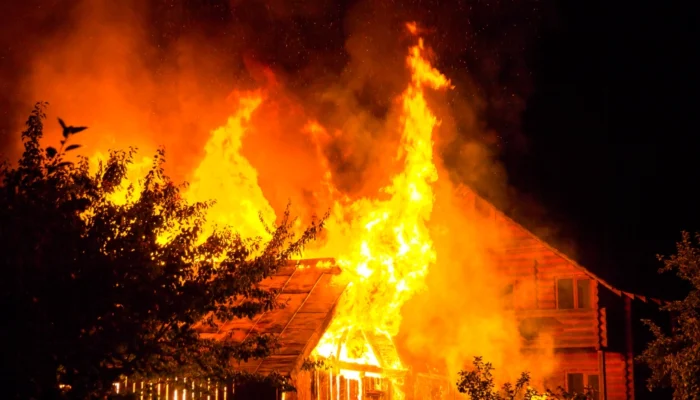Wildfires have become more intense and more frequent in many parts of the world. As forests burn, communities are left devastated, and ecosystems are permanently damaged. In the face of these growing dangers, technology is stepping in to help. One of the most exciting tools we now have is artificial intelligence (AI), specifically machine learning. By studying massive amounts of data from past fires, AI is helping scientists and emergency responders improve wildfire prediction and prevent disaster before it starts. This new approach is changing how we understand, manage, and fight wildfires across the globe.
.
Table of Contents
ToggleThe Growing Threat of Wildfires
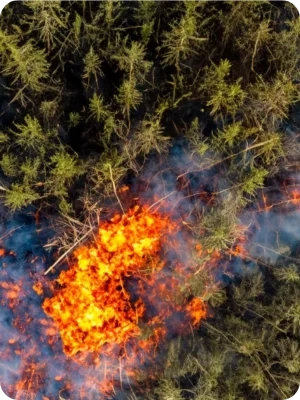
Every year, wildfires destroy thousands of acres of land and put communities, wildlife, and entire ecosystems at risk. These fires are not always caused by lightning or natural events—the vast majority are actually started by human activity, such as unattended campfires, discarded cigarettes, or power lines. Once a fire begins, it can spread rapidly, driven by wind, dry vegetation, and high temperatures.
Climate change is also playing a major role. Hotter temperatures and more frequent droughts are creating ideal conditions for fires to ignite and burn more intensely. Traditional methods of predicting wildfires—often based on weather monitoring and human observation—are no longer fast or reliable enough to stop many of these fires before they get out of control.
To make matters worse, many wildfires aren’t even immediately visible, especially in remote regions or in the early stages when smoke may not be easy to detect. Fires can travel quickly, jumping rivers, highways, and other natural barriers. A small spark can become a massive blaze in a matter of minutes, leading to staggering losses—not only to homes and property, but also to forests, air quality, and long-term environmental health.
For more insights into how wildfires begin, spread, and affect our world, the article 9 Interesting Facts About Wildfires offers a deeper look into their causes, behaviors, and surprising effects on climate and ecosystems.
Because of these growing and complex risks, we urgently need smarter, faster, and more predictive tools to deal with wildfires—and that’s where machine learning comes in.
.
What Is Machine Learning and How Does It Work in This Context?
Machine learning is a branch of AI that allows computers to learn from data and make decisions without being directly programmed. Instead of giving a machine a fixed set of rules to follow, we give it a large set of information—also known as data—and the computer finds patterns and makes predictions based on that data.
In the context of wildfire prediction, machine learning uses information such as satellite images, past wildfire records, weather forecasts, wind speeds, humidity levels, soil dryness, and even the type of vegetation growing in an area. These data points help the computer recognize where fires are most likely to start and how they might spread.
The more data the machine has, the better it becomes at making accurate predictions. For example, if a certain type of weather has led to fires in the past, the machine will learn to associate similar weather conditions with a higher fire risk in the future. Over time, this process helps build models that are much more accurate than traditional fire forecasting methods.
.
Applications of Machine Learning in Wildfire Prediction
Machine learning is not just a concept or a theory. It’s already being used in many real-life situations to predict, detect, and manage wildfires. Several tools and systems based on AI are helping firefighters and emergency response teams make faster and smarter decisions.
.
Risk Assessment
One of the biggest advantages of machine learning is its ability to assess risk across large areas of land. AI systems can analyze terrain, weather, and human activity to map out which areas are at the highest risk for a wildfire. These maps are updated regularly as new data comes in, giving fire managers a clear picture of where danger is building.
Instead of relying on old information or general predictions, authorities can now receive real-time updates that show them where to focus their resources. This allows firefighters to prepare in advance and helps city planners make smarter decisions about land use, building codes, and firebreaks.
.
Early Warning Systems
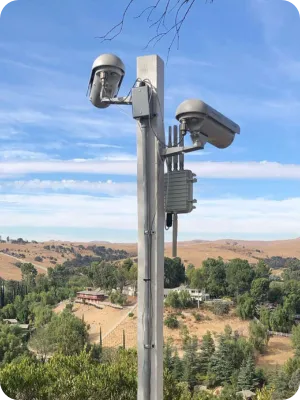
Early warning is one of the most important parts of fighting wildfires. The sooner a fire is detected, the easier it is to control. Machine learning models, combined with cameras and satellite systems, can scan forests and open land 24/7, looking for signs of smoke or heat that could indicate a fire.
AI is used to quickly recognize patterns in the images that could signal the start of a wildfire. These systems are much faster and more accurate than humans, especially when monitoring large, remote areas. Once a possible fire is spotted, the system can alert emergency services immediately, giving them a head start on controlling the blaze.
For a deeper look at how these systems work, check out the article Fire and Smoke Detection Cameras, which explains how cameras and infrared sensors are used with AI to detect fires before they spread.
.
Resource Allocation
Another important use of machine learning is helping decide where to send firefighting resources. During wildfire season, numerous fires often occur simultaneously in different locations. With limited personnel and equipment, it’s crucial to send help where it’s needed most.
Machine learning systems can analyze live data from the field and help officials decide which fires are the most dangerous or which areas are most at risk. They can even predict how a fire might behave in the next few hours or days, helping leaders stay ahead of the flames.
Evacuation Planning
AI can also be used to protect people by making evacuation plans more accurate and efficient. Using traffic patterns, road maps, weather forecasts, and fire behavior data, machine learning models can recommend the safest and fastest routes out of danger zones. This helps save lives, especially in fast-moving fires that can trap people with little warning.
.
Benefits of AI-Driven Fire Management
The use of AI in wildfire prediction has brought many benefits. First and most importantly, it helps save lives. The faster a fire is detected and controlled, the fewer people are harmed, and the fewer homes and buildings are destroyed.
Another major benefit is protecting the environment. Forests take decades to grow back after a wildfire. Wildlife habitats are lost, and air quality is damaged. By using AI to catch fires early and manage resources better, we can reduce the damage done to nature.
AI also helps reduce the cost of fighting wildfires. Fires are incredibly expensive to manage, and prevention is always cheaper than response. With better predictions and early warnings, fire departments can act before fires become massive, expensive disasters.
Finally, AI helps improve decision-making. Leaders and emergency responders are often forced to make choices in stressful, fast-moving situations. Machine learning tools provide them with reliable, up-to-date information, helping them make better decisions under pressure.
.
Challenges and Limitations
Even though machine learning is a powerful tool, it’s not perfect. There are still several challenges that need to be addressed.
One issue is the quality of the data. If the data going into the system is old, incomplete, or incorrect, the predictions made by the machine won’t be accurate. In many parts of the world, data collection is still limited, especially in rural or developing regions.
Another problem is that machine learning models are sometimes hard to understand. These models are often described as “black boxes” because they don’t always show how they arrived at a certain decision. This can make it difficult for scientists and emergency workers to fully trust the system or explain its predictions to others.
There’s also the challenge of combining AI with traditional firefighting techniques. Some firefighters and local officials may be hesitant to rely on technology, especially if they’re used to doing things a certain way. Training and education are needed to help people use these new tools effectively.
.
The Future of Wildfire Prediction and AI
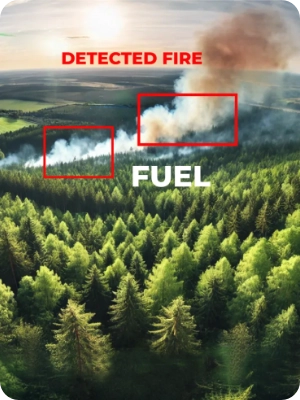
As technology continues to improve, the future of wildfire prediction looks promising. New tools are being developed that can make predictions even more accurate and even faster.
One exciting area of growth is the use of drones and sensors. Drones can fly over forests and other areas, capturing real-time video and heat data. Ground sensors can monitor temperature, moisture levels, and smoke. All this data can be fed into AI systems to give an even clearer picture of where fires might start and how they might move.
If you’re curious about how drones and sensors are being used to spot fires early, read the article Can Drones and Sensors Spot Fires Before They Go Wild?. It gives a great overview of how these tools work together with AI to protect people and nature.
Another trend is global cooperation. Wildfires don’t respect borders, and sharing data between countries can help improve predictions around the world. As more nations begin using AI, they can learn from each other and create better, more advanced systems.
Finally, as AI gets smarter, we may see the creation of real-time wildfire prediction maps that are updated every hour or even every minute. These maps could be available to the public, allowing people to see where fires are forming and how they should prepare.
.
Conclusion
Wildfires are one of the most dangerous natural disasters we face today. As climate change continues to affect the planet, fires are becoming more common and more destructive. Traditional methods of managing wildfires are no longer enough.
That’s why machine learning and AI are so important. They give us the power to predict fires earlier, respond faster, and protect more lives and land. By studying past data and spotting patterns that humans can’t always see, AI is changing how we understand and fight wildfires.
The future of wildfire prediction depends on continued innovation, strong data systems, and cooperation between governments, scientists, and local communities. With the right support, AI can help us build a safer and more fire-resilient world.
